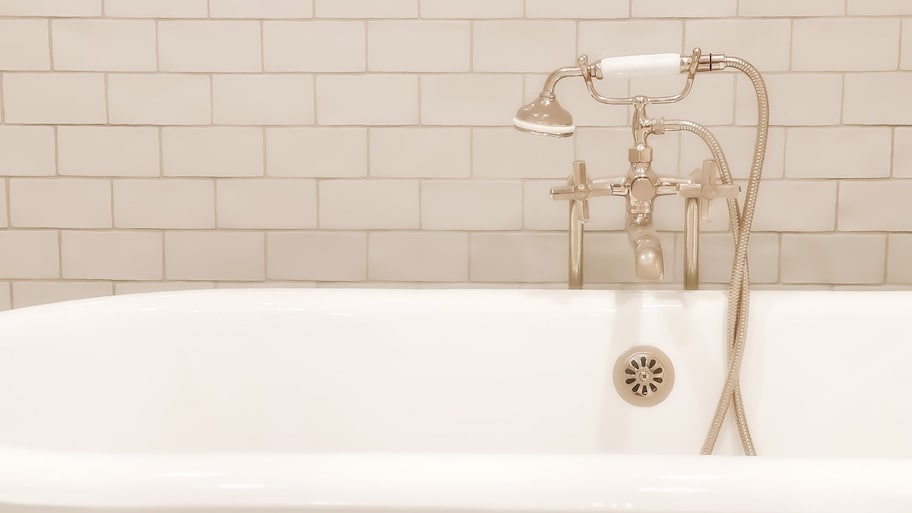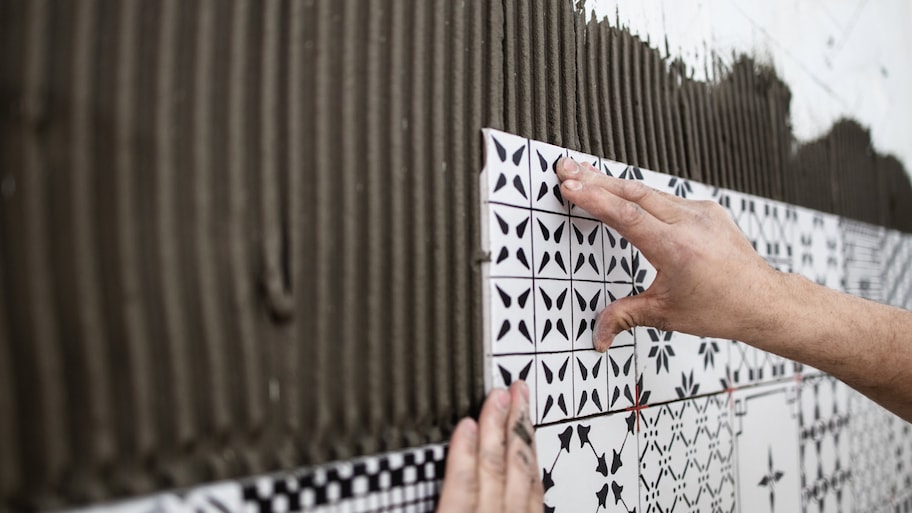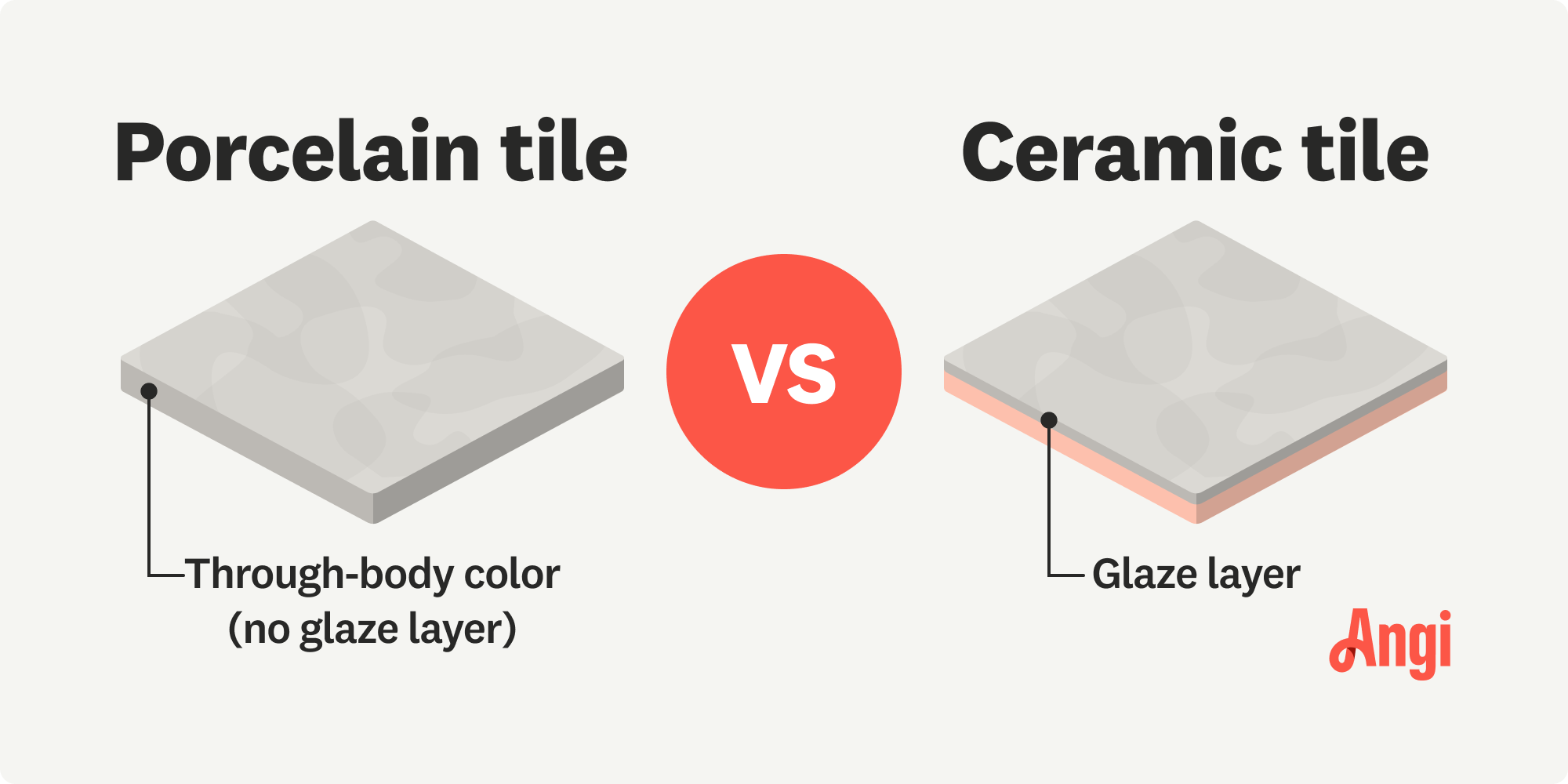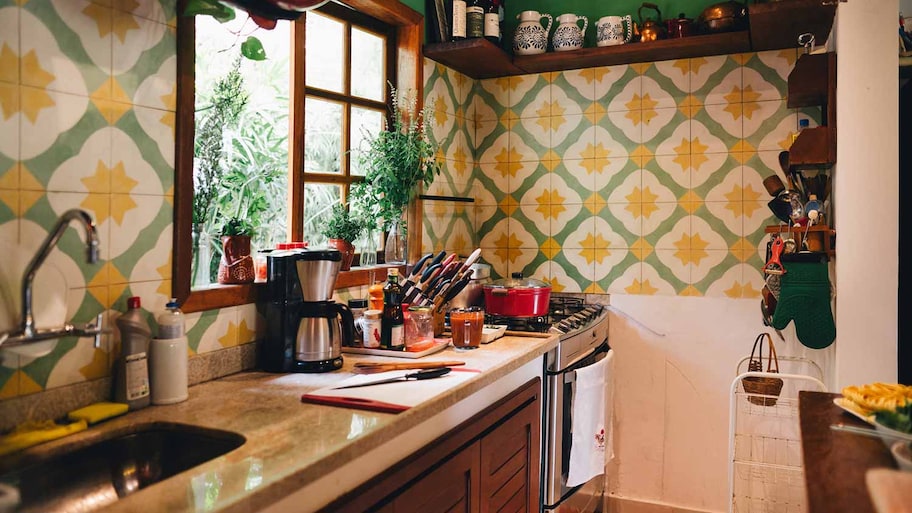Porcelain vs. Ceramic Tile: Which Is Best for Your Home?
Don’t crack under the pressure of choosing tile for your project


Highlights
Ceramic is fired at around 1,600 degrees Fahrenheit.
Porcelain is made with finer clays fired at around 2,200 degrees Fahrenheit (or higher).
Porcelain is less porous, absorbing less than 0.5% of water.
Ceramic comes at a lower cost, around $5 to $10 per square foot.
Both types of tile can last over 50 years with proper installation and care.
You’ve ripped out the old kitchen counters or the outdated shower tiles, and now you’re on to the most exciting part of a home renovation: choosing new tile. You notice many beautiful tiles that would work for your project, but how do you tell the difference between porcelain versus ceramic tiles? These two materials may seem similar, but they have major differences that make them each better suited to specific types of projects.
Porcelain vs. Ceramic Tile: Key Differences
The key differences between porcelain versus ceramic tiles are durability, cost, and installation difficulty. Porcelain tile is dense and highly durable, but that means it comes at a higher cost and is more difficult to install compared to ceramic. Ceramic tiles are softer and lighter in weight, making them easier for DIY installation and more budget-friendly, but they are more vulnerable to moisture, chips, and scratches.
What Is Porcelain Tile?

Porcelain is a type of high-quality ceramic made using fine clay fired at high temperatures, often over 2,200 degrees Fahrenheit. Porcelain is not very porous—it absorbs no more than 0.5% of water. This makes the material an excellent choice for moisture-prone areas, like showers or outdoor spaces. However, porcelain’s density and durability make it more challenging to install for DIYers, so if you choose porcelain for your project, leave installation to a local tile pro.
| Pros | Cons |
|---|---|
| Less porous | Higher cost |
| High durability | Difficult installation |
| More design options | Requires special adhesive |
Best for:
High-traffic areas
Tubs and showers
Kitchen counters
Pros of Porcelain Tile
There are pros and cons to porcelain tile, with the biggest pro being its extreme durability. Porcelain is dense and has low porosity, so it stands up well to everything from shower steam in the bathroom to spilled milk in the kitchen. You can even install it in outdoor spaces without worrying about it cracking or shifting from temperature changes.
Plus, porcelain comes in a wide range of design options. Not only can you find glazed porcelain similar to ceramic tiles, but you can also explore textured options made to look like natural stone or even wood.
Cons of Porcelain Tile
Porcelain does have its drawbacks, especially when it comes to installation. Its heavier weight and density make porcelain harder to handle and cut. Cutting porcelain tile requires extensive skills in using angle grinders or a wet tile saw, which can also be expensive to rent or purchase. Plus, since porcelain is not very porous, it needs a specific substrate material to adhere to walls and floors.
The cost of installinWhat Is Ceramic Tile?What Is Ceramic Tile?g porcelain tile can be more expensive with the special setting material and tools required for installation, and porcelain tile itself is also more costly than ceramic.
What Is Ceramic Tile?

Ceramic tile is made similarly to porcelain but using a less fine clay mixture fired at a lower temperature—around 1,600 degrees Fahrenheit. The resulting ceramic tile is thinner and more lightweight than porcelain, making it a popular option for DIY tiling projects. Because of this, ceramic tile absorbs water more easily, so it’s not the best choice for tubs and showers or kitchen counters (but it is great for backsplashes). Ceramic is often glazed for more unique and custom designs.
| Pros | Cons |
|---|---|
| Lower cost | More porous |
| Easy to install | Less durable |
| Lighter weight | Prone to scratches and chips |
Best for:
Lower-traffic areas
Wall tiling
Backsplashes
Pros of Ceramic Tile
Ceramic tile is popular because it balances unique styles with a lower cost for materials. Unless you opt for custom or designer tiles, you can expect to spend less than $10 per square foot for ceramic tiles.
In addition to being budget-friendly, ceramic tiles are also easier to install than porcelain. If you want to install tile yourself, ceramic is a great pick. It’s easy to cut and handle since it's a softer, lightweight material and doesn’t require any specialized setting material.
Cons of Ceramic Tile
Ceramic tile is more porous than porcelain, so if you spill coffee on ceramic countertops, you may be stuck with stained tiles. Consequently, ceramic tile is best reserved for areas that aren’t hit with a lot of water or other liquids (unless you’re diligent about sealing the tiles regularly and cleaning up spills immediately).
The lower density of ceramic tile means this material isn’t quite as durable as its porcelain counterpart. Dropping a garden tool on the ceramic floors of your mudroom could leave behind a chip, and ceramic tile may crack under heavy foot traffic or frequent temperature changes.
Porcelain vs. Ceramic Tile

Although porcelain is a type of ceramic tile, these two options have many differences to consider before you decide on one for your tiling project.
Appearance: Tie
No matter whether you choose porcelain versus ceramic tiles, you’re sure to be satisfied with the project when you’re done. Ceramic often comes glazed, but there are unglazed options. Porcelain can also feature a glazed finish. Both types of tile come in a wide variety of colors and patterns to suit any interior design style.
Options and Customizations: Porcelain
Although both porcelain and ceramic tiles are attractive and come in a variety of colors, porcelain offers even more versatility. You can find porcelain tiles that mimic the appearance of wood or stone, and porcelain may be glazed or textured for different looks.
Durability: Porcelain
Because porcelain is fired at higher temperatures, it is a much stronger and more durable material compared to ceramic. Porcelain is less porous, so it holds up well to moisture, and it’s less prone to contraction or expansion in cold or hot temperatures. Porcelain is also much less vulnerable to scratching, denting, or cracking than ceramic.
Price: Ceramic

Tile installation costs an average of $5 to $45 per square foot, depending on the material. Ceramic falls on the lower end of the price range, although both of these materials cost less than stone tiles, such as marble or granite. Ceramic tiles cost $5 to $10 per square foot, and porcelain tiles cost $10 to $15 per square foot.
Ease of Installation: Ceramic
Ceramic is softer than porcelain. This means it’s easier to cut ceramic tiles to size during installation, making it a more achievable DIY project. Cutting porcelain often requires specialized tools to avoid breaking the tiles.
Ease of Repair: Tie
No matter which type of tile you choose, the repair process is similar. To repair minor cracks in tile, you can use epoxy or remove the old tile and replace it with an extra you stashed away after installing the tile. To prevent any moisture from seeping into the damaged tile, though, it’s best to hire a pro as soon as possible to fix any cracked porcelain or ceramic tiles.
Maintenance: Tie
Ceramic and porcelain tiles require similar upkeep. You’ll want to clean your tiles regularly, once a day for counters and at least once a week for wall and floor tiles, using warm water and a mild soap. Plan to deep clean and reseal the grout at least once per year.
Length of Life: Porcelain
Porcelain and ceramic tiles have a life span of 50 years or more with proper installation and maintenance. However, because of the harder material, increased moisture resistance, and improved durability, porcelain often lasts longer than ceramic tile. Ultimately, opting for tiles with a Porcelain Enamel Institute (PEI) rating of 3, 4, or 5 will ensure better quality, longer-lasting tiles.
